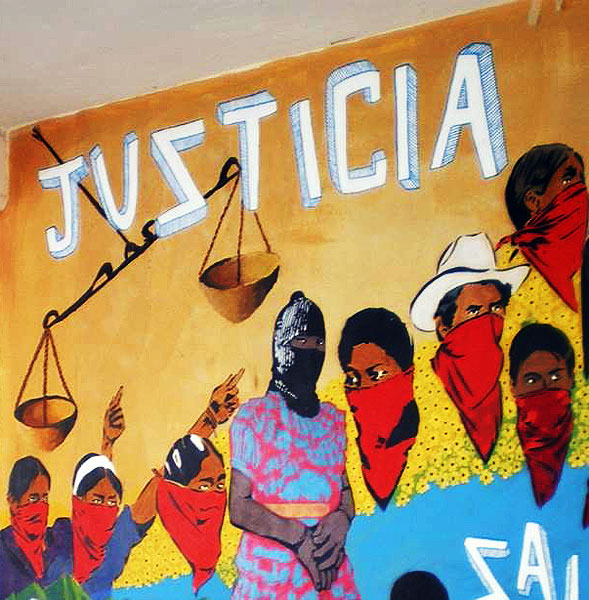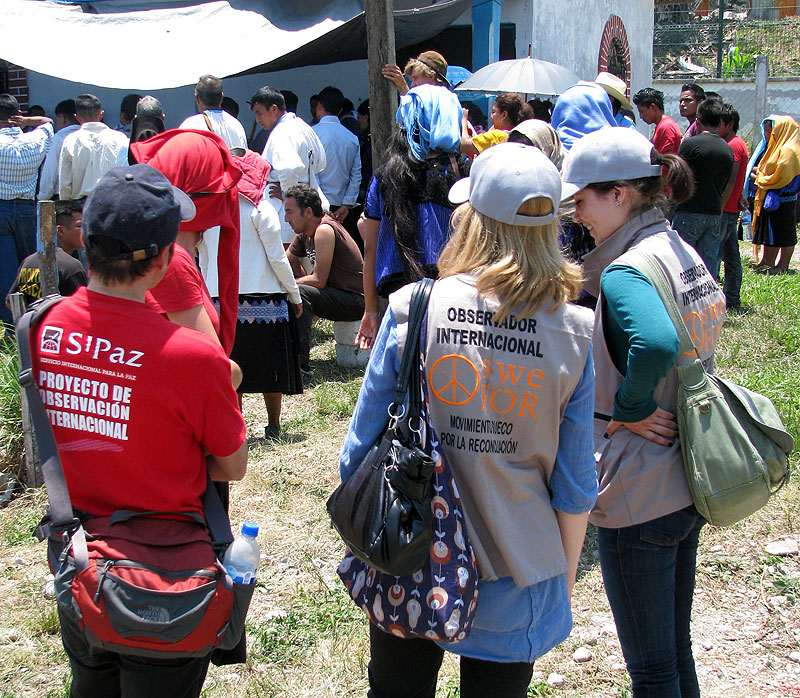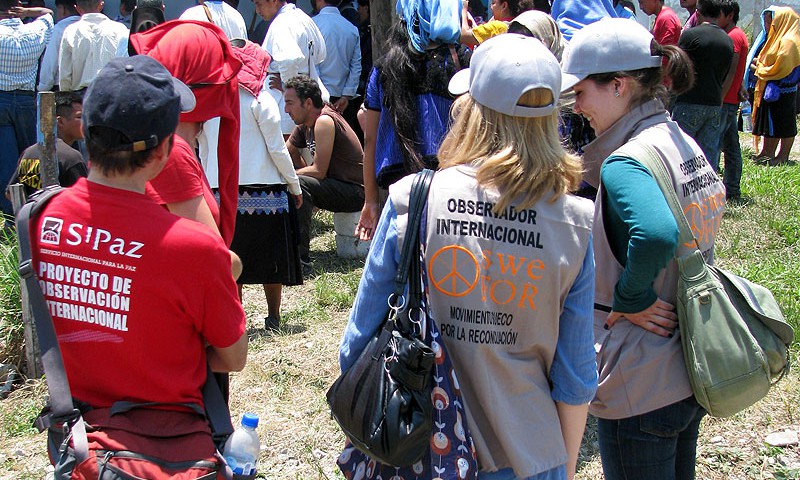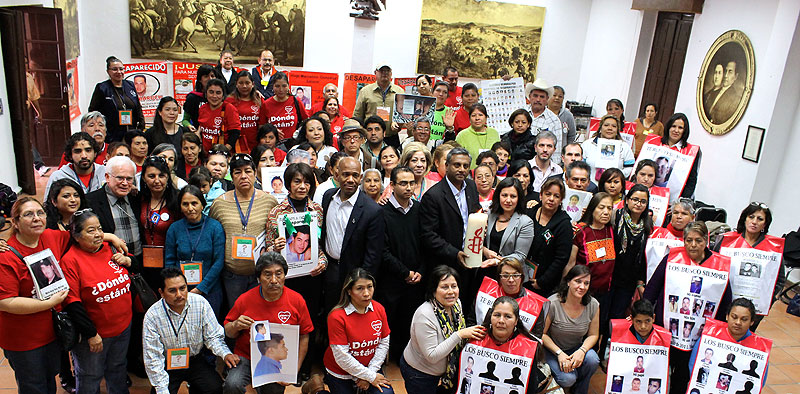
IN FOCUS: Thinking of another justice
21/05/2014SIPAZ ACTIVITIES (From mid-February to mid-May 2014)
21/05/2014“The international organizations that engage in accompaniment are vital for the work of human-rights defenders […] given that they not only accompany us when we are at risk but also serve as witnesses to the violence we suffer and the context in which we work.”
During the month of April, the second meeting of organizations that work in international accompaniment and observation took place in San Cristóbal del las Casas. On this occasion, different organizations with a presence in Mexico, Guatemala, Honduras, and Colombia participated. Some of the questions that were raised at the meeting had to do with the need to identify common themes in work and to seek out strategies of coordination and action that would allow for an increase in the effectiveness of the work that is carried out.

© Frayba
The accompaniment and observation provided by international organizations in countries wherein violations of human rights and political persecution of collectives exist and individuals who work to defend these rights represent a strategy of protection and prevention that allows these threatened groups and persons to continue working in favor of peace and human rights in their countries. For the Cerezo Committee, an organization that is accompanied by Peace Brigades International (PBI) Mexico, “thanks to [this] accompaniment […], death threats […] have ceased […]. The risk for members of the Committee has decreased, thus generating conditions that have allowed them to continue their defense work […]. Without the protection provided to us by the PBI, we could not carry out our work, as we would have to invest more time and more human and economic resources to reduce our risk.”
Although the protection of the citizens and their rights in a country is the obligation of the State, in certain contexts this does not obtain, such that the work of international accompaniment and observation through a physical presence in areas of conflict can contribute to a change in this situation of vulnerability of rights via a possible dissuasion of violations to human rights, a monitoring and documenting of violations when they occur, the diffusion of information at the national and international levels of observed violations, as well as political influence that puts pressure on States to respect and guarantee human rights in their territories. By means of international support networks that organizations involved in accompaniment have in different countries, in addition to the institutional ties these have with international organs, the diplomatic corps, State authorities, and other actors involved in conflicts, the idea is that the actors that could violate human rights change their behavior due to the political costs implied by the making-visible of their actions at the national and international levels.
Other aspects of the work and activities that can form a part of the strategy of international accompaniment and observation include psychosocial support, national and international denunciation, security workshops, workshops for the positive transformation of conflicts, the opening of spaces for peace and reconciliation, and the construction of ties with other organizations at the national and international levels working on processes of peace construction in favor of human rights.
The protection strategy implemented by international accompaniment and observation organizations has borne fruit and contributed to improvements of the situation in contexts of conflict and political violence wherein human rights have been violated and human-rights defenders are persecuted and threatened. Accompanied persons and organizations have concluded as much, as in the case of a Ch’ol indigenous person from the Northern Zone of Chiapas (a region that at the end of the 1990s suffered grave attacks and forcible displacements of the population as part of the action of paramilitary groups acting within a larger strategy of counterinsurgency): “Since the end of the 1990s, SIPAZ has been monitoring and documenting what has been happening in the Northern Zone. SIPAZ arrived first at a time of much risk, with threats and attacks. It helped to bring what was happening in the Northern Zone to public light. In this way the displaced came together, showed their power, and succeeded in returning […]. The Northern Zone has been covered only sparsely by organizations due to its isolation and the risks involved, but SIPAZ has been present at all times. It has helped us to express and share what we feel and the problems we confront. Only a few of us remain who struggle for justice, but we know that we are not alone.”


